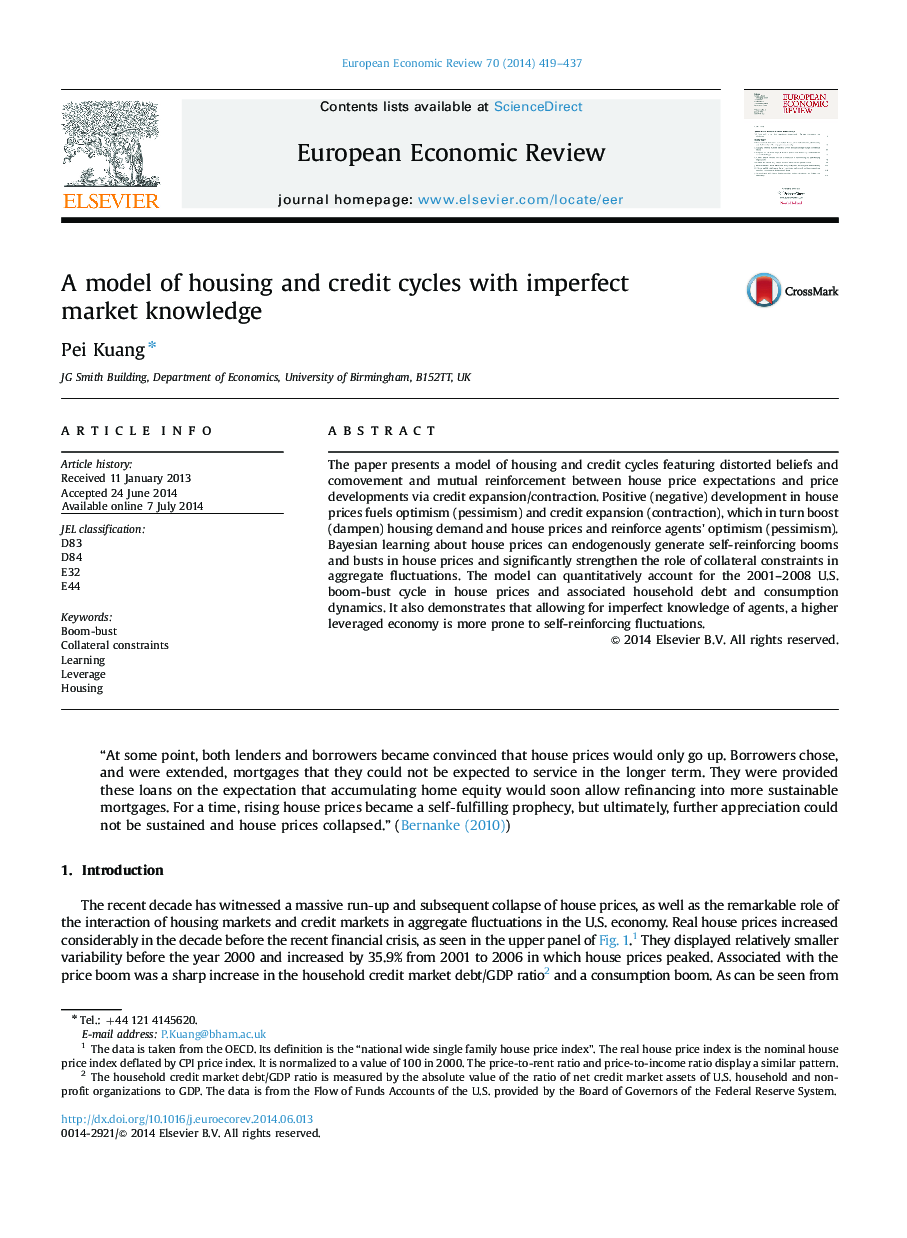| Article ID | Journal | Published Year | Pages | File Type |
|---|---|---|---|---|
| 5066726 | European Economic Review | 2014 | 19 Pages |
â¢I model the interaction of house prices, price beliefs and credit limit.â¢The model features comovement between price development and expectations.â¢Learning asset prices strengthens the role of collateral constraints in fluctuations.â¢The model explains recent U.S. housing cycle, debt and consumption dynamics.â¢A higher leveraged economy is more prone to self-reinforcing fluctuations.
The paper presents a model of housing and credit cycles featuring distorted beliefs and comovement and mutual reinforcement between house price expectations and price developments via credit expansion/contraction. Positive (negative) development in house prices fuels optimism (pessimism) and credit expansion (contraction), which in turn boost (dampen) housing demand and house prices and reinforce agents׳ optimism (pessimism). Bayesian learning about house prices can endogenously generate self-reinforcing booms and busts in house prices and significantly strengthen the role of collateral constraints in aggregate fluctuations. The model can quantitatively account for the 2001-2008 U.S. boom-bust cycle in house prices and associated household debt and consumption dynamics. It also demonstrates that allowing for imperfect knowledge of agents, a higher leveraged economy is more prone to self-reinforcing fluctuations.
